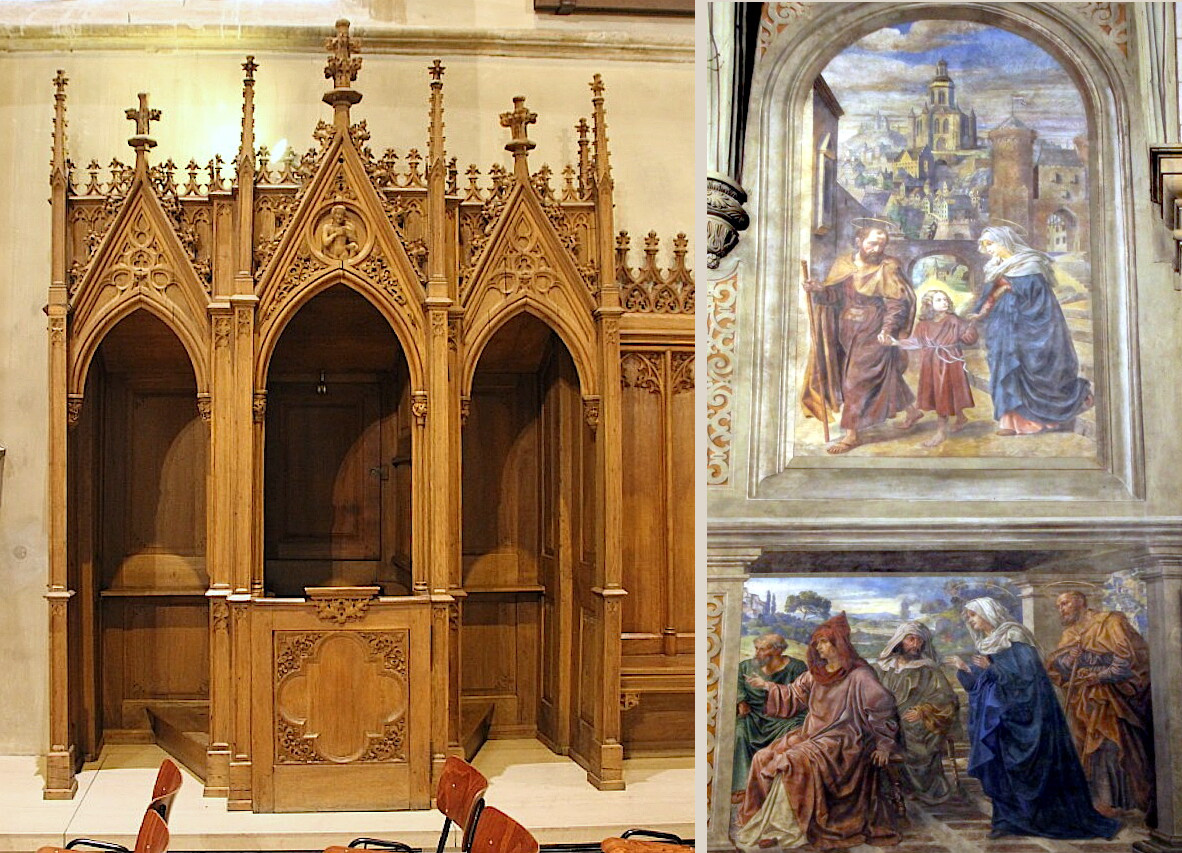Notre-Dame Cathedral of Luxembourg
The high spires of the Cathedral of Notre-Dame, this is the first thing that attracts the attention of tourists, and this object usually begins acquaintance with the city.
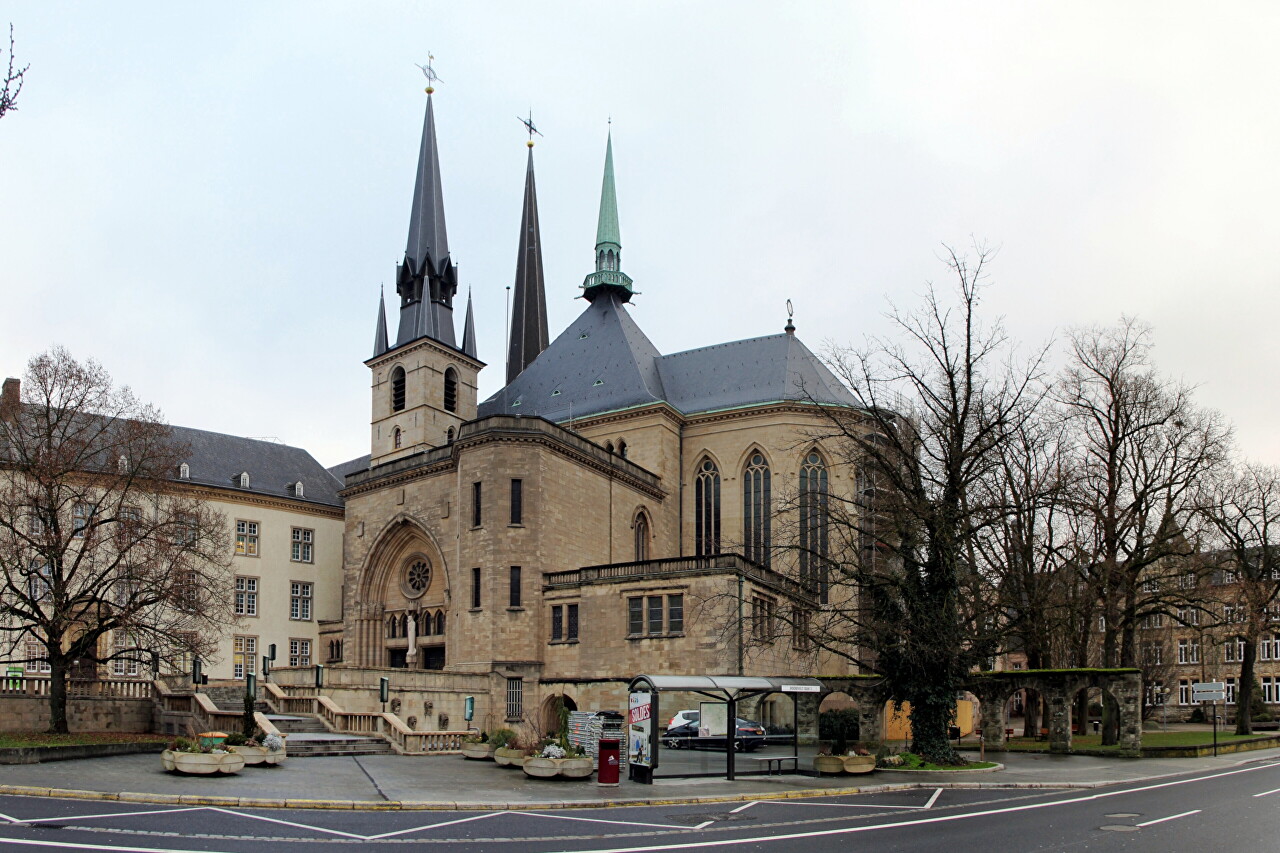
The main portal of the cathedral is located on the Cathedral Square (Parvis de la Cathédrale) but it was built relatively recently, in 1938, but the main facade faces Rue Notre Dame and has retained its appearance since 1621.
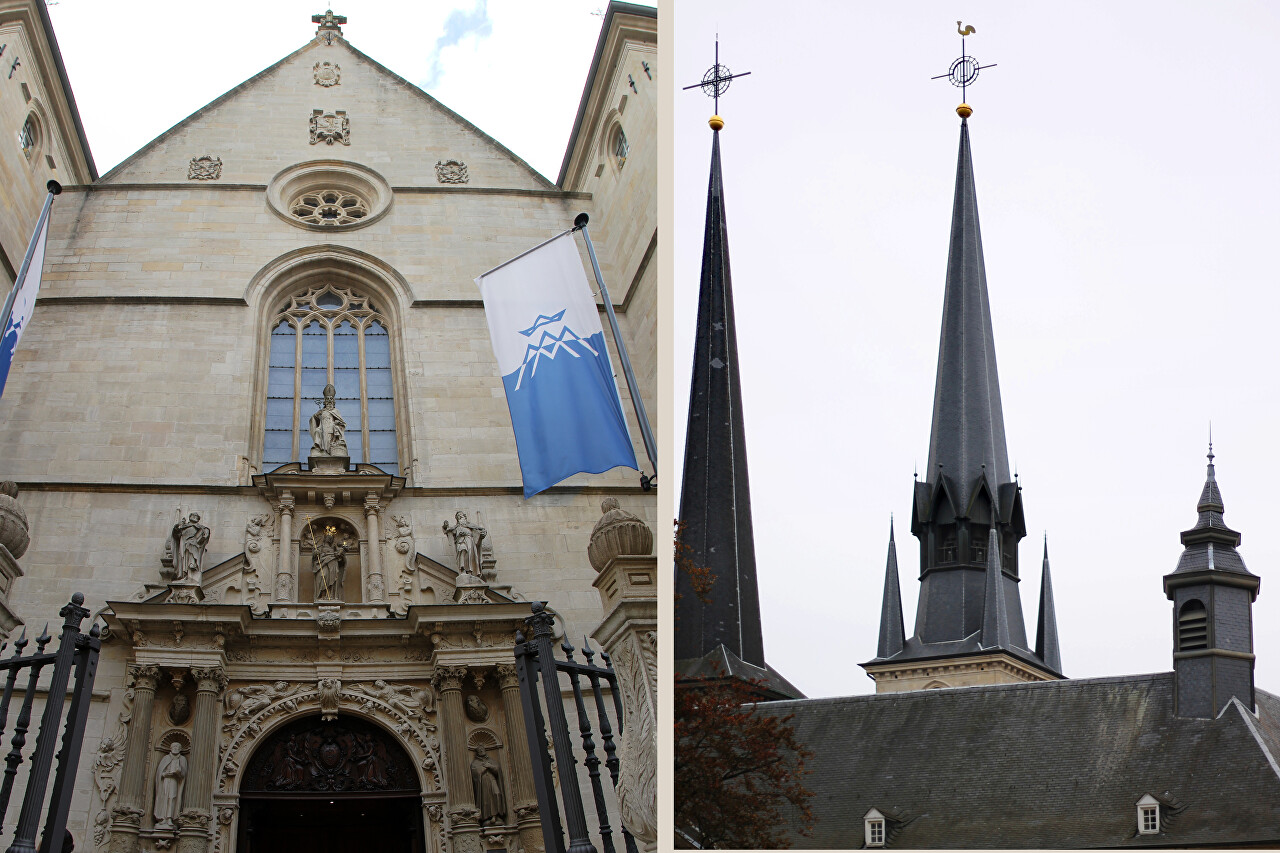
The history of the cathedral began in 1603, when the Belgian Jesuits founded a college in Luxembourg, and on May 7, 1613, the Jesuit church was founded. Master Ulrich Job from Lucerne was invited to lead the construction.
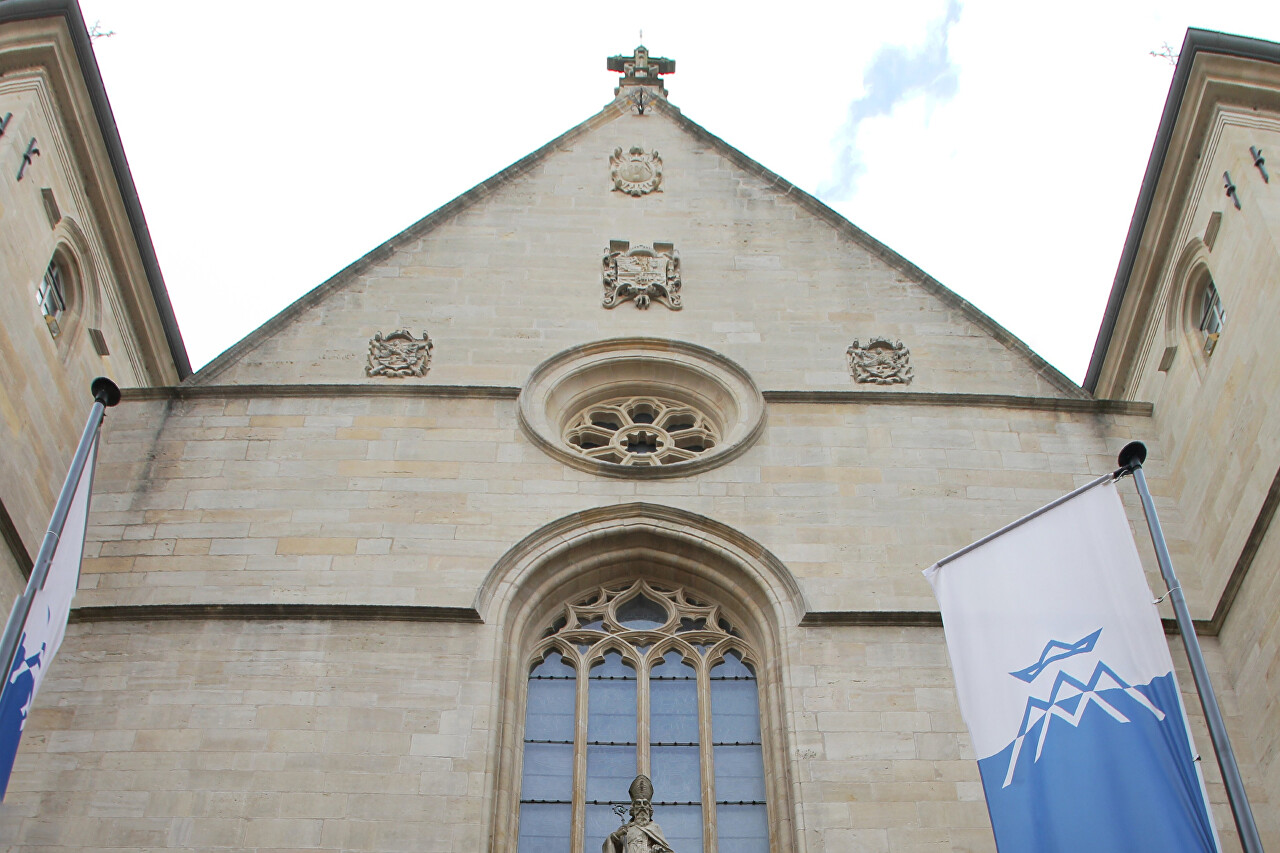
The design was done by the sculptor Daniel Muller from the Saxon city of Freiberg. The church was consecrated in the name of the Immaculate Conception in 1621.
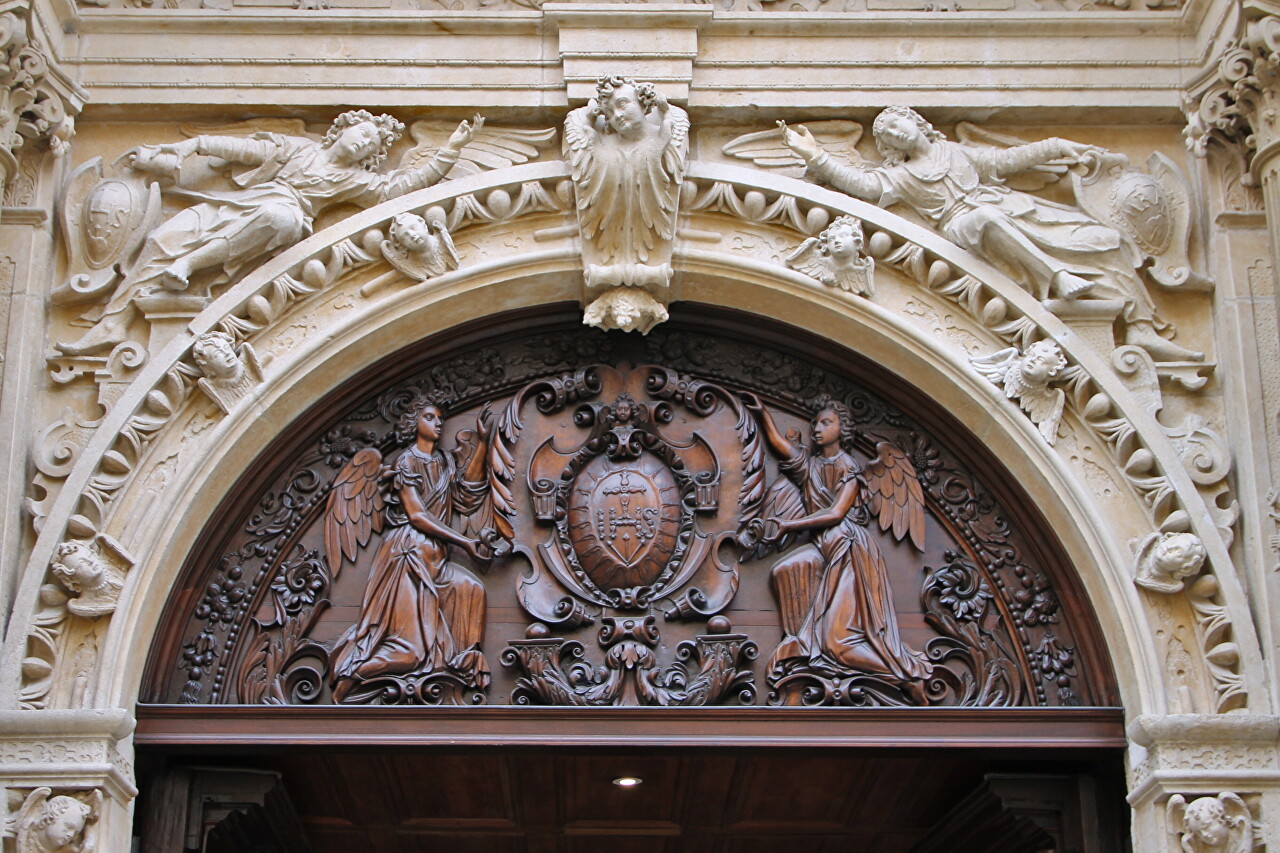
In 1773, the persecution of the Jesuits began, in 1778, by decree of the Austrian Empress Maria Theresa, the church was transferred to the city authorities of Luxembourg, after which it became the center of the parish of St. Nicholas and St. Theresa. The sculpture of St. Nicholas above the entrance from Rue Notre-Dame reminds us of this.
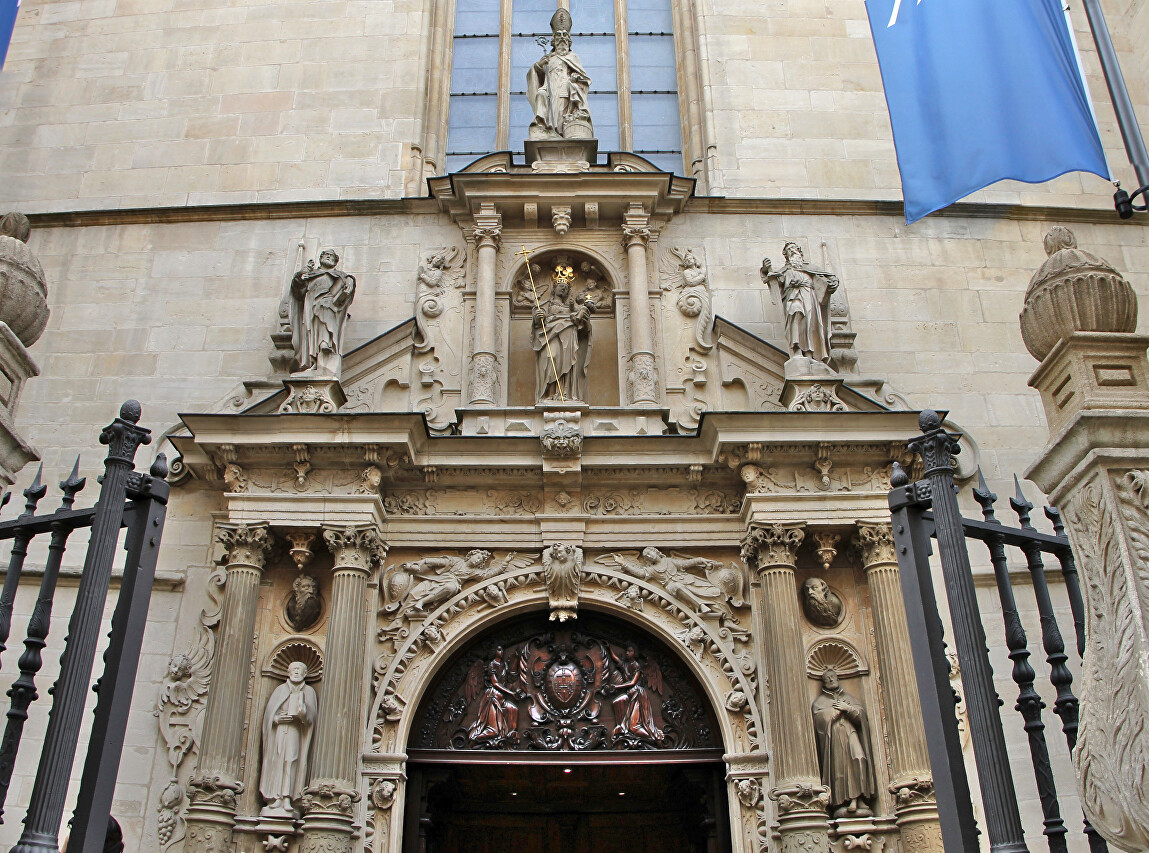
At the end of the XVIII century, a miraculous image of Our Lady of Consolation (Sancta Maria Consolatricis Afflictorum), the patroness of the city, appeared in the church.
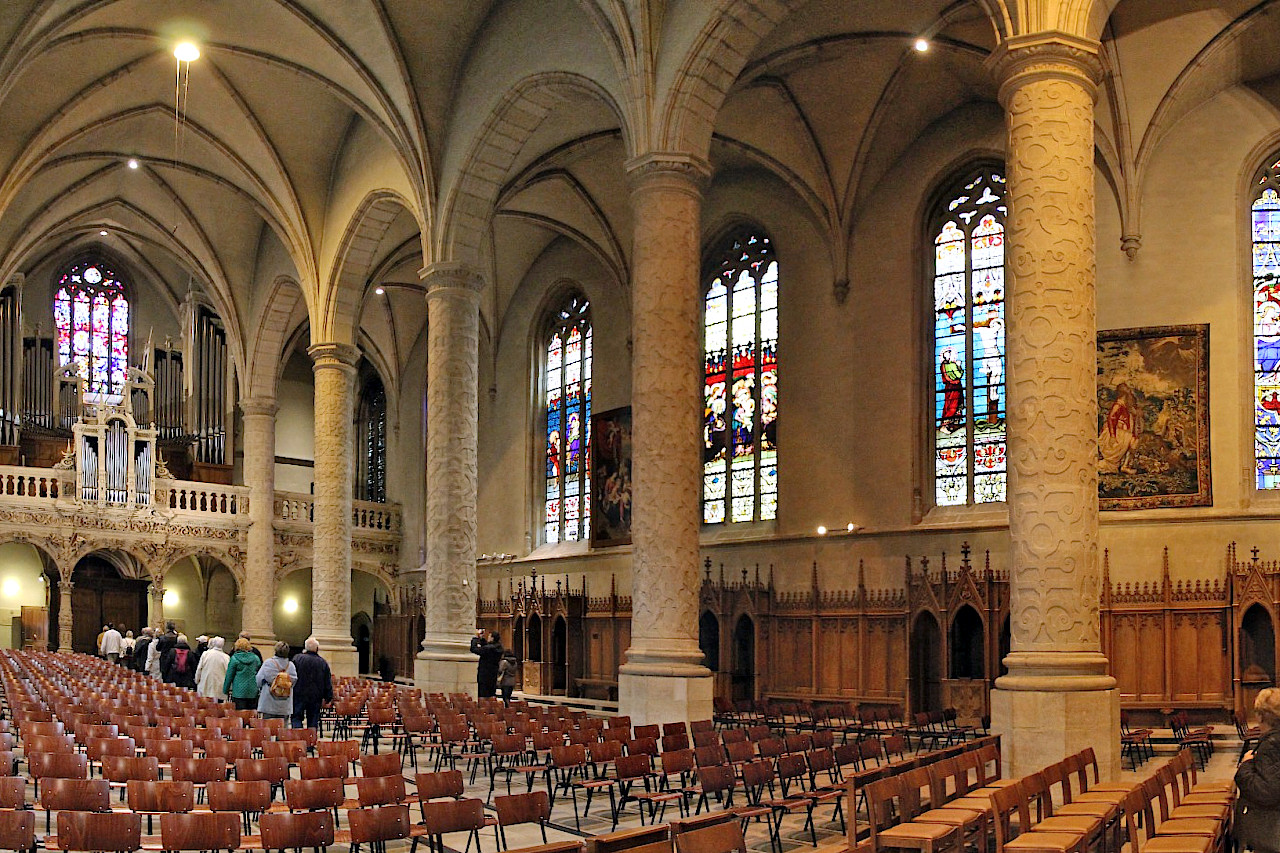
In 1801, the church again changed its name, this time it was dedicated to St. Peter.
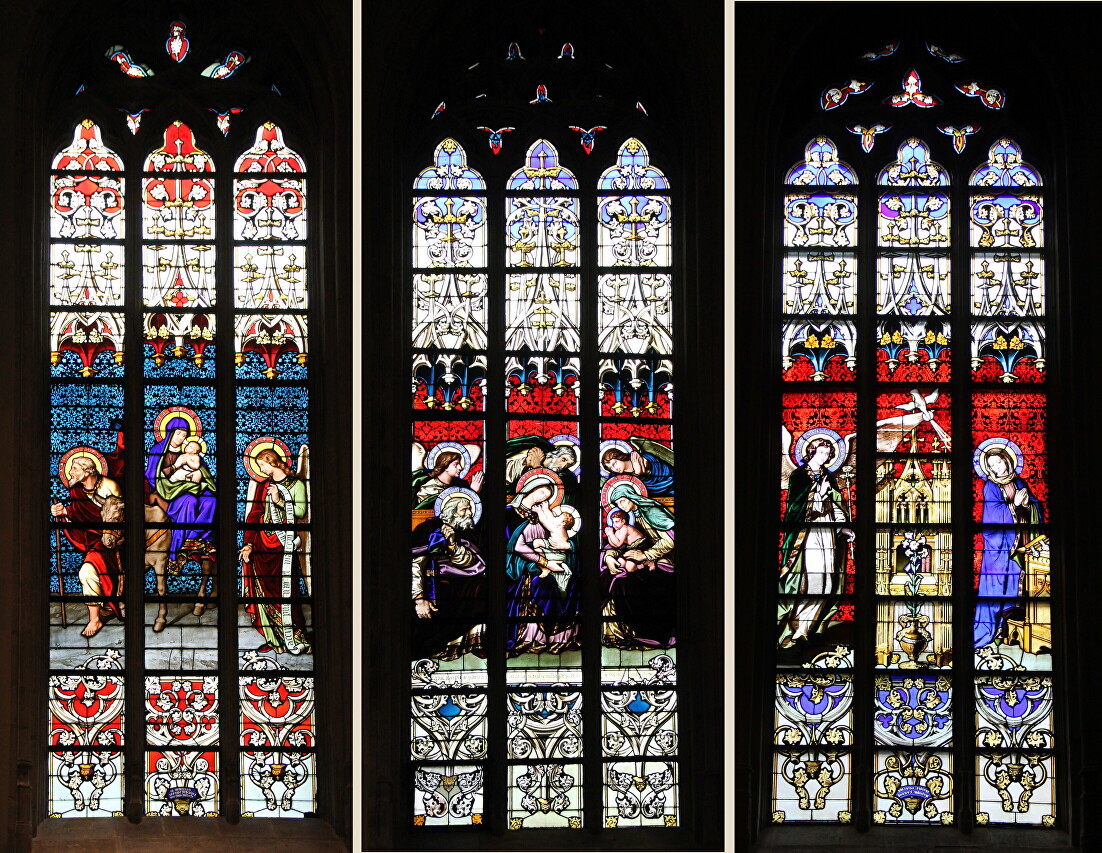
Since 1848, the church has been named after Our Lady (Notre Dame), then began the reconstruction of the interiors in the Baroque and neo-Gothic style, completed in 1854. On June 27, 1870, Pope Pius IX founded the Bishopric of Luxembourg, and the Church of Notre-Dame received the status of a cathedral (Cathedral Notre-Dame vu Lëtzebuerg).

In 1935, under the direction of the city architect Hubert Schumacher, the most extensive reconstruction began, as a result of which the wooden frame of the ceiling was replaced with a steel beam structure and two towers with high narrow spires were built.
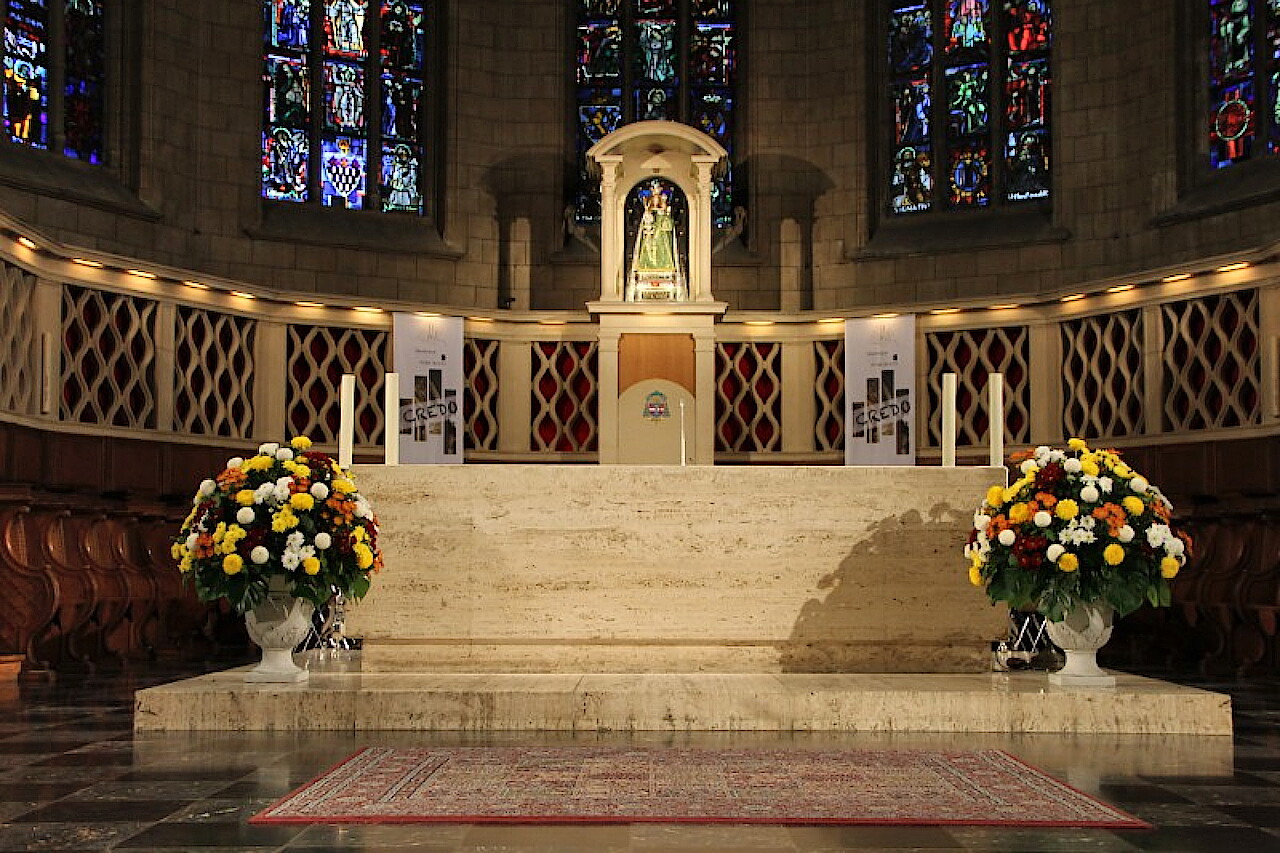
The cathedral received its final neo-Gothic appearance in 1938, giving Luxembourg a distinctive silhouette and becoming its symbol.
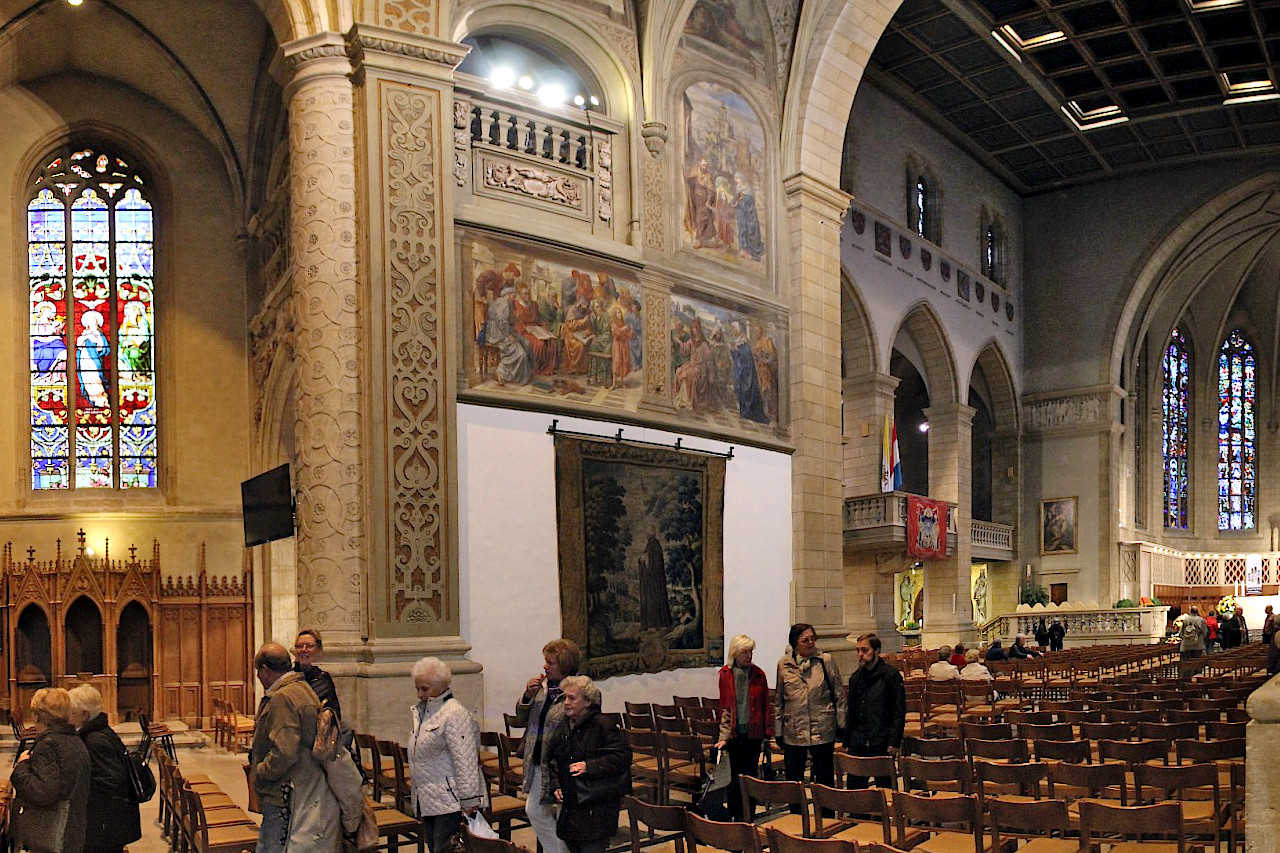
On April 5, 1985, a fire broke out on the west tower during renovation work. The fire destroyed four bells, and the collapse of the spire damaged the roof of the central nave. However, on October 17, 1985, the consequences of the fire were fully restored. Restoration was carried out according to the preserved drawings of 1937.
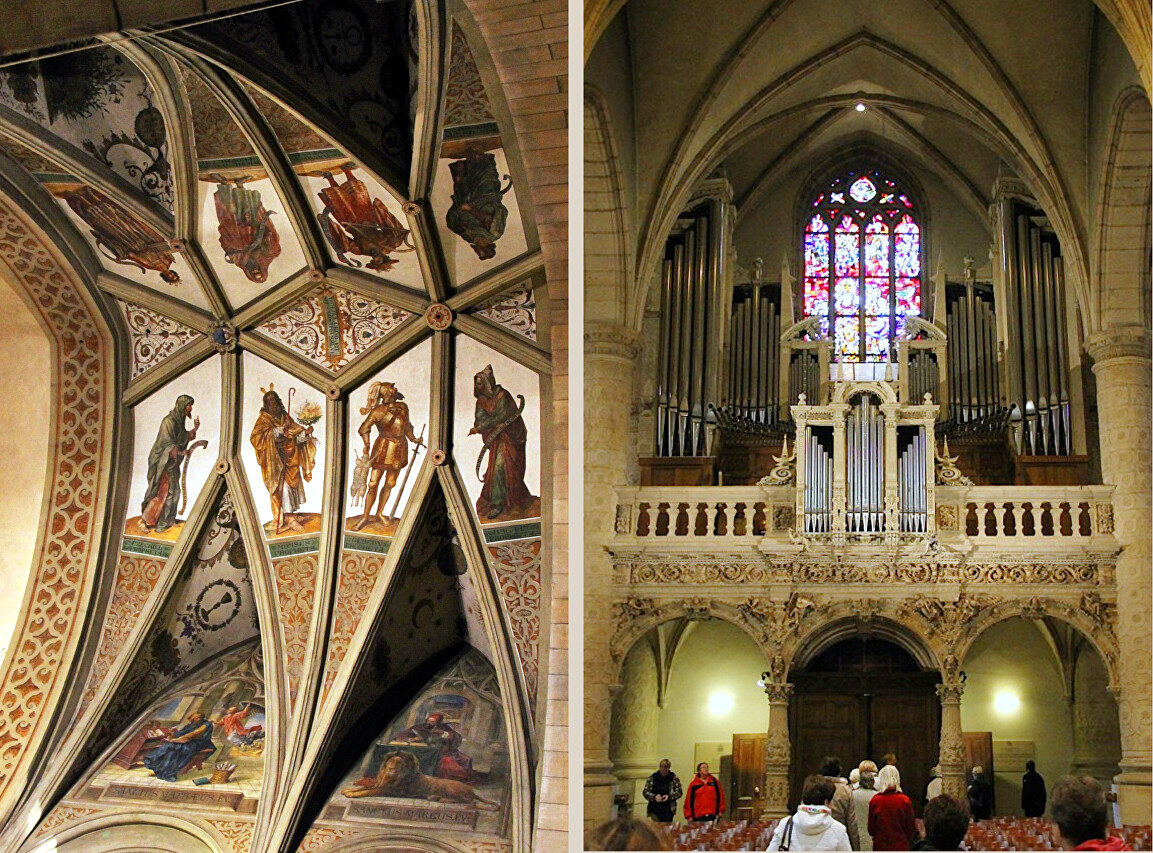
The cathedral serves as the tomb of the Dukes of Luxembourg, starting with John of Bohemia (14th century), its remains were transferred from Germany in 1945.
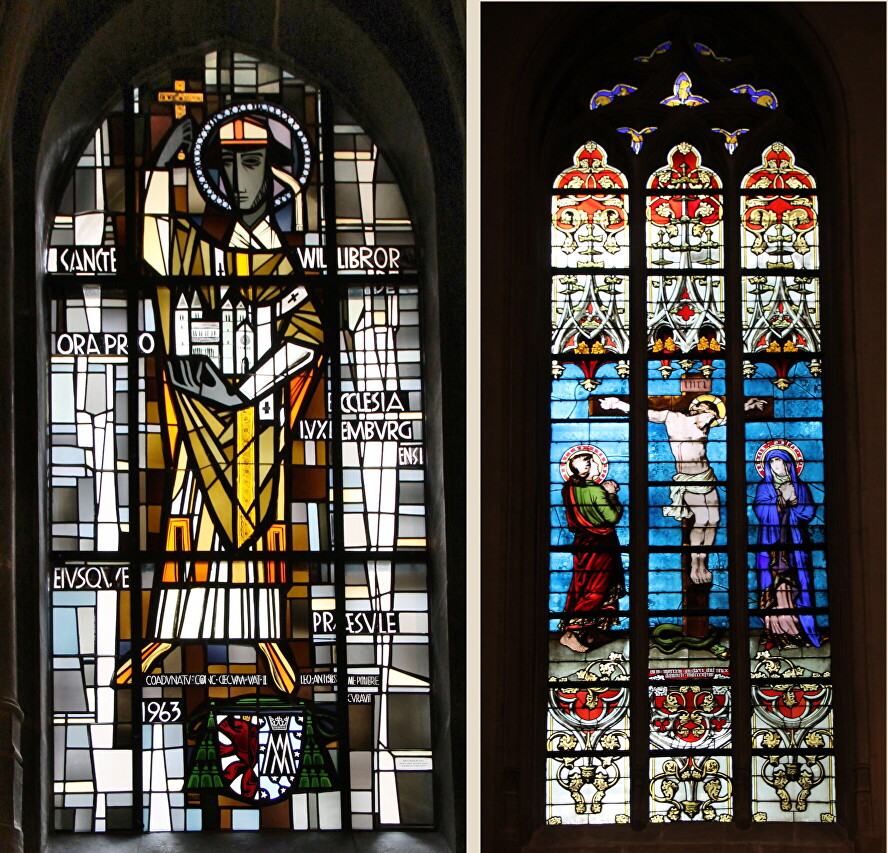
The cathedral is open to the public daily, except on Sundays from 8 am to 6 pm.
